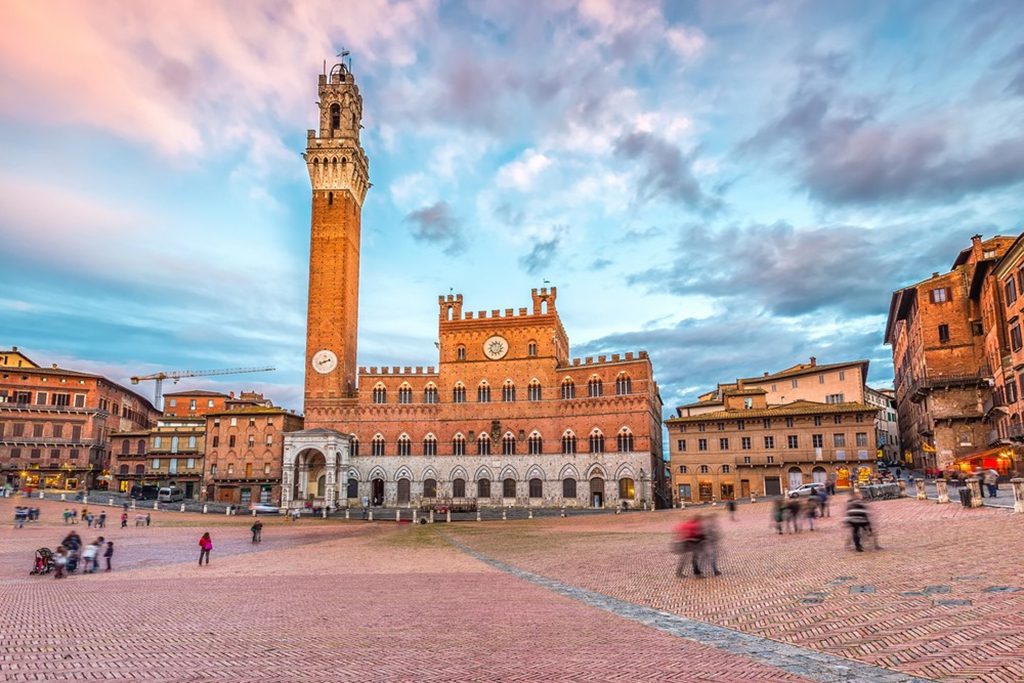The largest concentration of sites designated as World Heritage by UNESCO is in Italy. There are works of art and historical landmarks scattered over the country. Famous art cities like Rome, Venice, and Florence have been drawing tourists there for centuries. Italy is known for its artistic heritage, but the country also has stunning coastlines, alpine lakes, and mountain ranges. It’s easy to see why the area is often referred to as “the Bel Paese” (beautiful country).
Italy is home to so many wonderful landmarks that it would be impossible to include even a fraction of them here. Nonetheless, the items on the following list should serve as a decent indication of why more than 40 million people from outside Italy visit the country each year.
30. Verona Arena
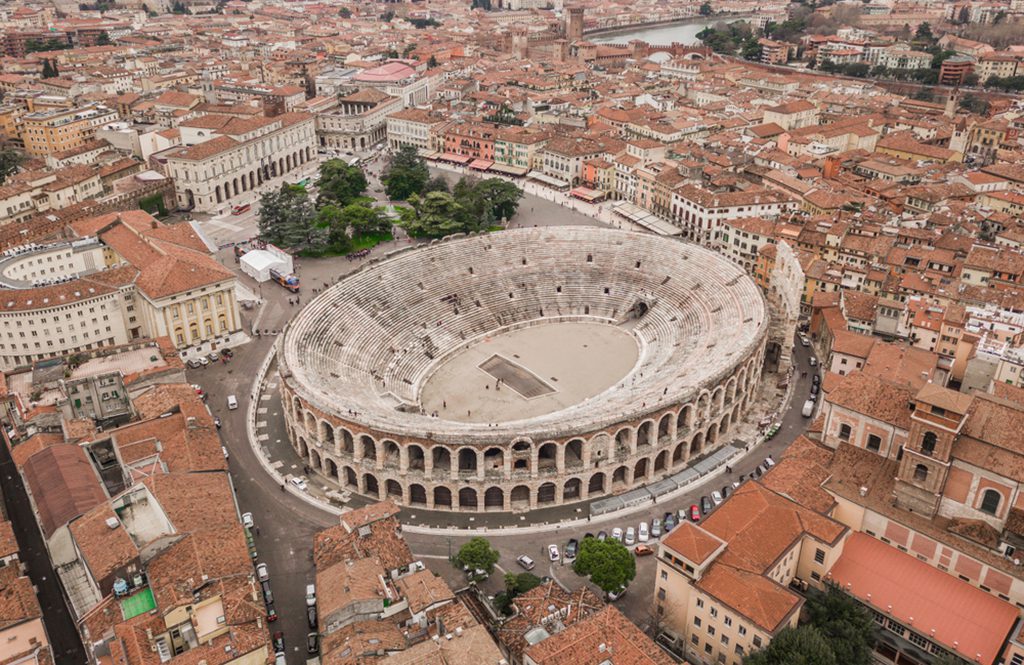
As famous as the Verona Arena is for its part in Shakespeare’s Romeo and Juliet, it really predates the city itself. Two thousand years ago, the Romans built this spectacular arena, which they called an amphitheater. The Verona Arena is an ancient structure that has been astonishingly well kept, especially considering that its largest attendance was over 30,000 people. The arena continues to host musical acts, bringing Italy’s rich history and culture to life for modern tourists.
29. Herculaneum
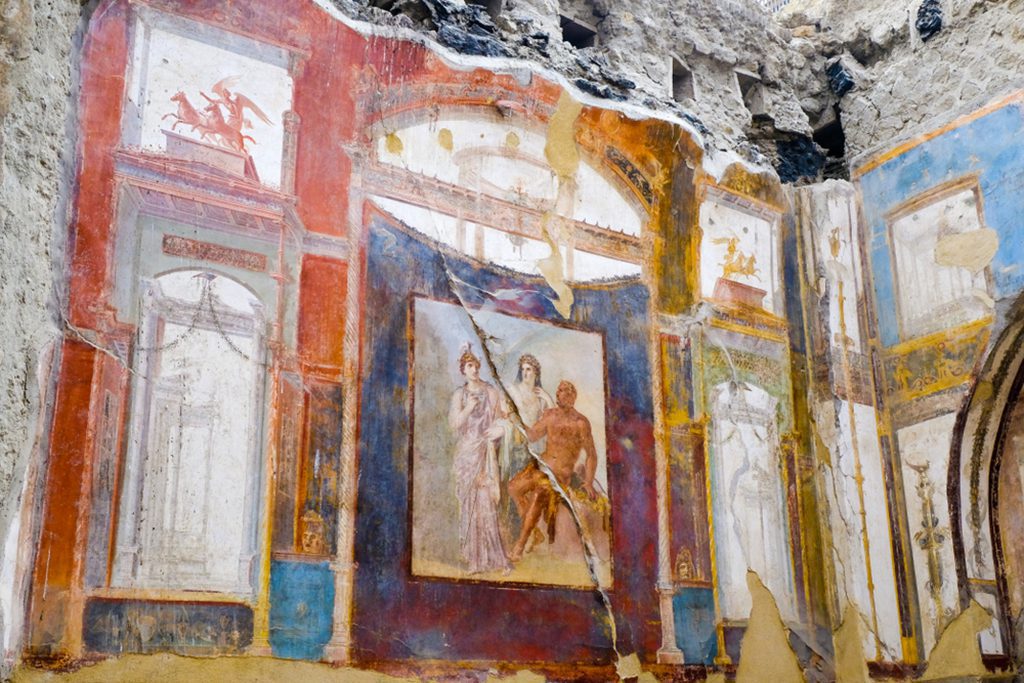
Herculaneum, an old Roman town, is located at the foot of Mount Vesuvius. Herculaneum was wiped out about two millennia ago by a volcanic catastrophe. The ensuing layer of mud, however, preserved and fossilized most of the building, much as it did in its greater competitor, Pompeii. At Herculaneum, tourists may witness fossilized skeletons, ancient advertisements, and exquisite mosaics showcasing art from millennia ago, in addition to historic houses that have been restored to look as they did 2,000 years ago.
28. Elba
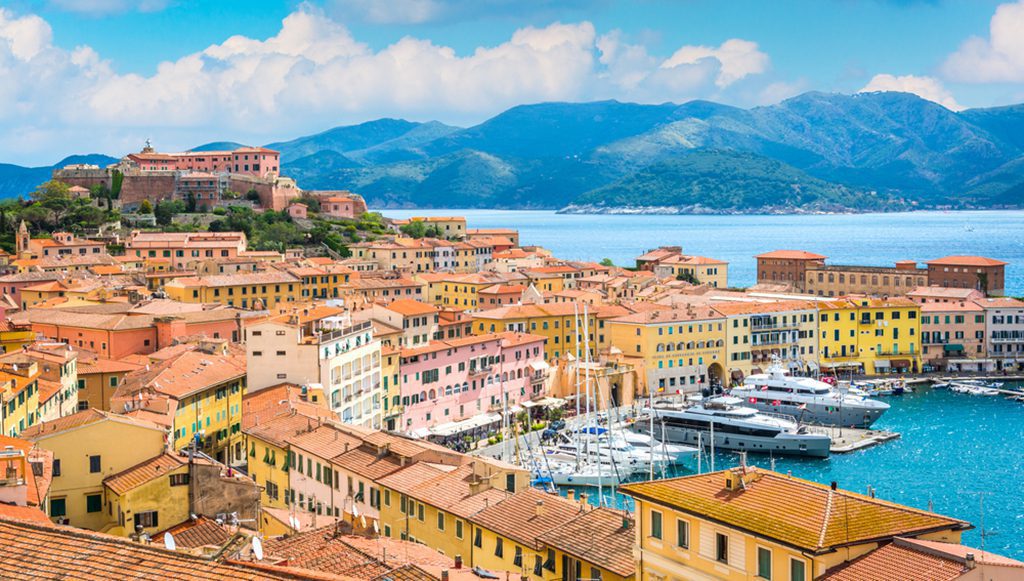
Elba has seen several civilizations come and go throughout the centuries, including the Ligures Ilvates, the Greeks, the Etruscans, and the Romans. However, Napoleon, who was exiled to Elba in 1814, was the island’s most famous inhabitant. Both of Napoleon’s residences, his winter and summer houses, are still standing and can be visited today. There are more than 150 beaches on Italy’s third-largest island, which range from open shorelines to secluded coves.
27. Gran Paradiso National Park
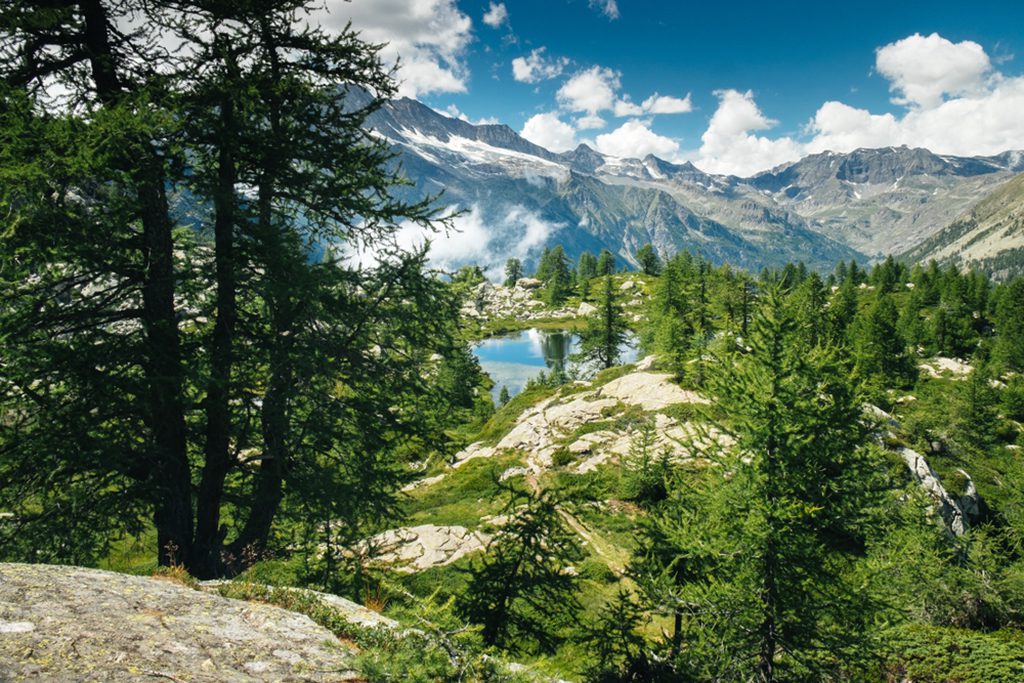
The Gran Paradiso National Park in the Graian Alps is a beautiful spot with breathtaking vistas and excellent hiking. Although the original purpose of the Gran Paradiso National Park was to save the local ibex population, the park is also home to a wide variety of other animals, including ibex, badgers, wolves, lynx, ermine, and over a hundred different kinds of birds. Hiking in the summer, leaf-peeping in the fall, snowshoeing or cross-country skiing in the winter, and shooting spring flowers are just a few of the seasonal pursuits that can be enjoyed here.
26. Palazzo Ducale in Urbino
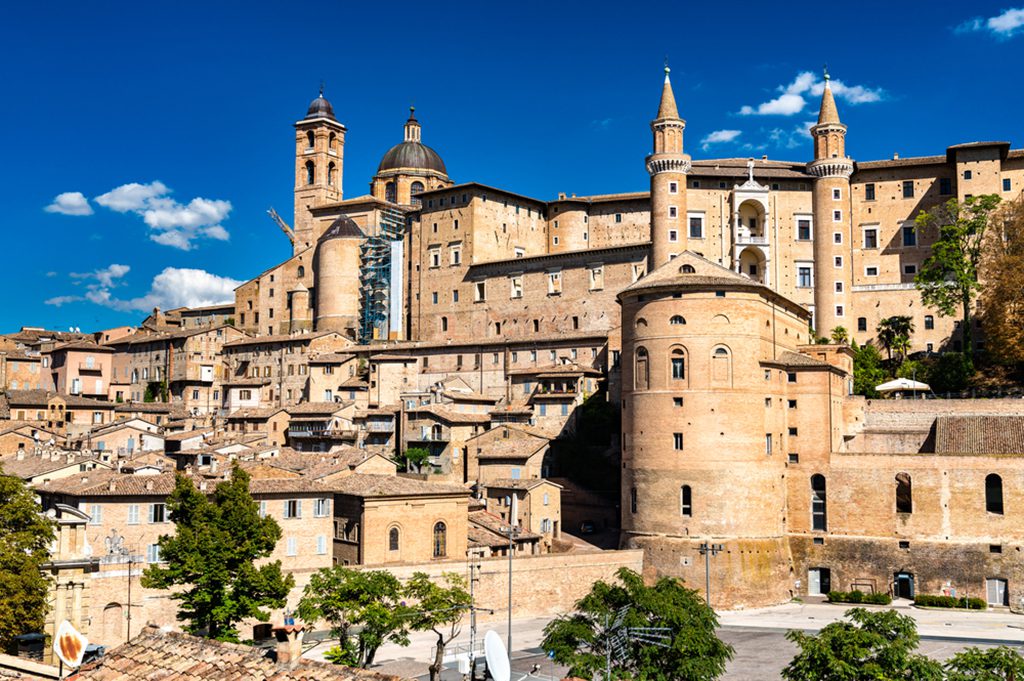
The Ducal Palace, or Palazzo Ducale, in Urbino is a beautiful Renaissance structure. The palace, which was completed in the 15th century, is immense, with a peak population of 600 people being housed there at one time. Many of the rooms of the Palazzo Ducale have been restored to resemble those in the 15th century and are now available to the public. A large collection of Renaissance paintings can be seen in the National Gallery of the Marche, which is also housed in the palace.
25. Trevi Fountain in Rome
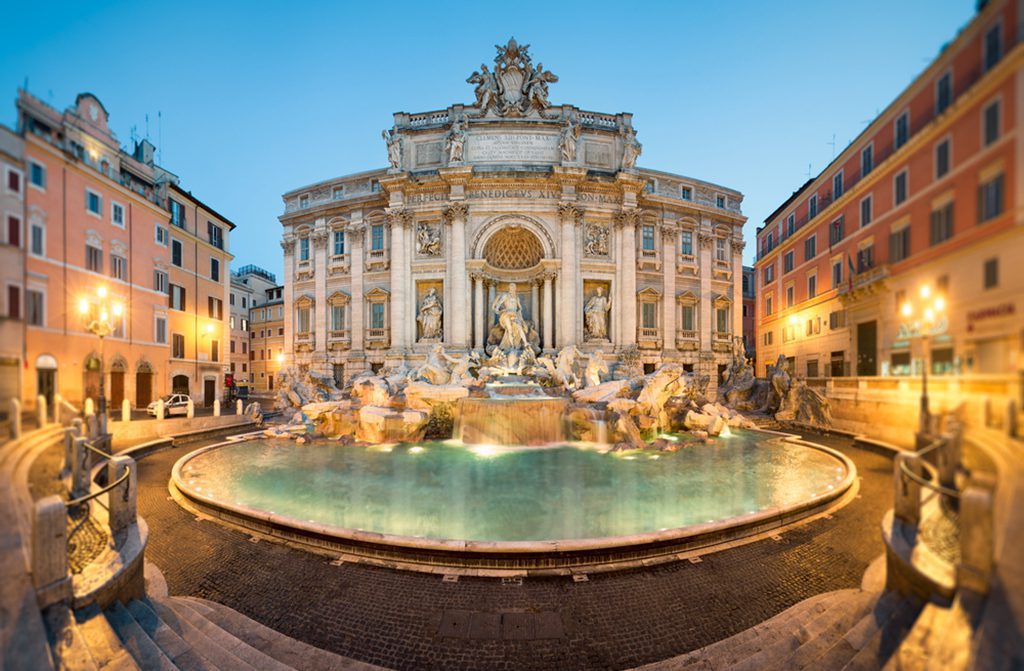
The Trevi Fountain in Rome is a famous landmark. Nicola Salvi built the fountain in 1762, and it features a depiction of the deity Neptune surrounded by aquatic animals engaged in combat. It is said that if you toss a coin into the Trevi Fountain, you will be able to return to Rome, and if you toss two coins, you will be able to find true love with a Roman man or woman. At night, when the fountain is lit up, it becomes a mystical and romantic destination for couples.
24. Santa Maria delle Grazie in Milan
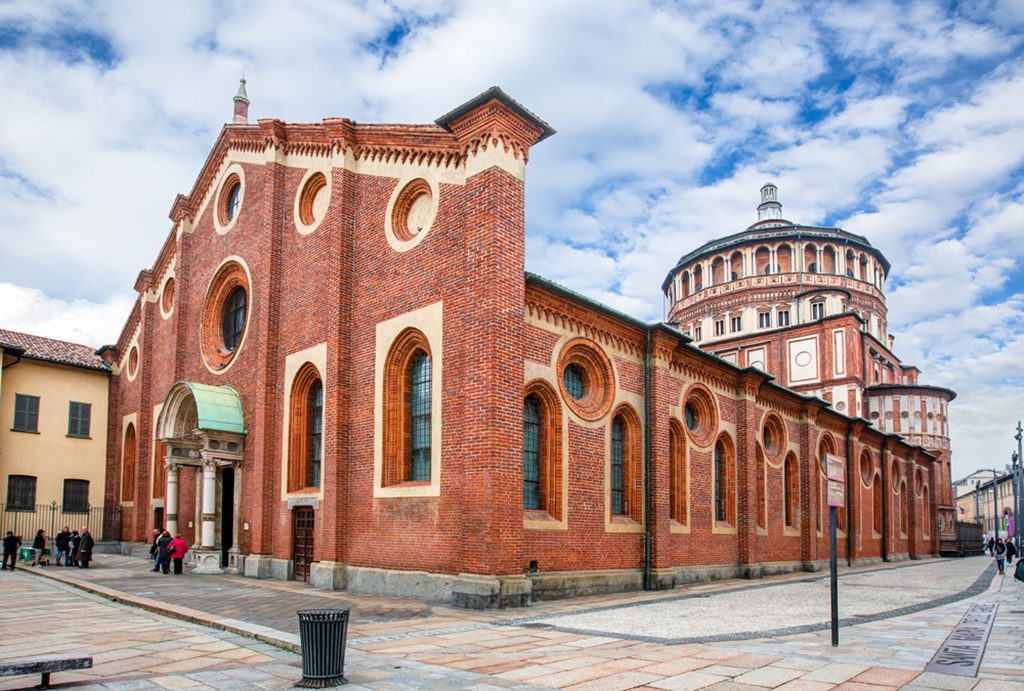
It is a church and convent dedicated to the Holy Mary of Grace (Santa Maria delle Grazie) in Milan, Italy. The building is a beautiful representation of Renaissance style, complete with a decorated nave and a spacious, well-lit foyer. The Last Supper, a fresco by Leonardo da Vinci, can be seen at Santa Maria delle Grazie. To get a close-up look at this famous artwork, many people make the trip to the church.
23. La Pelosa
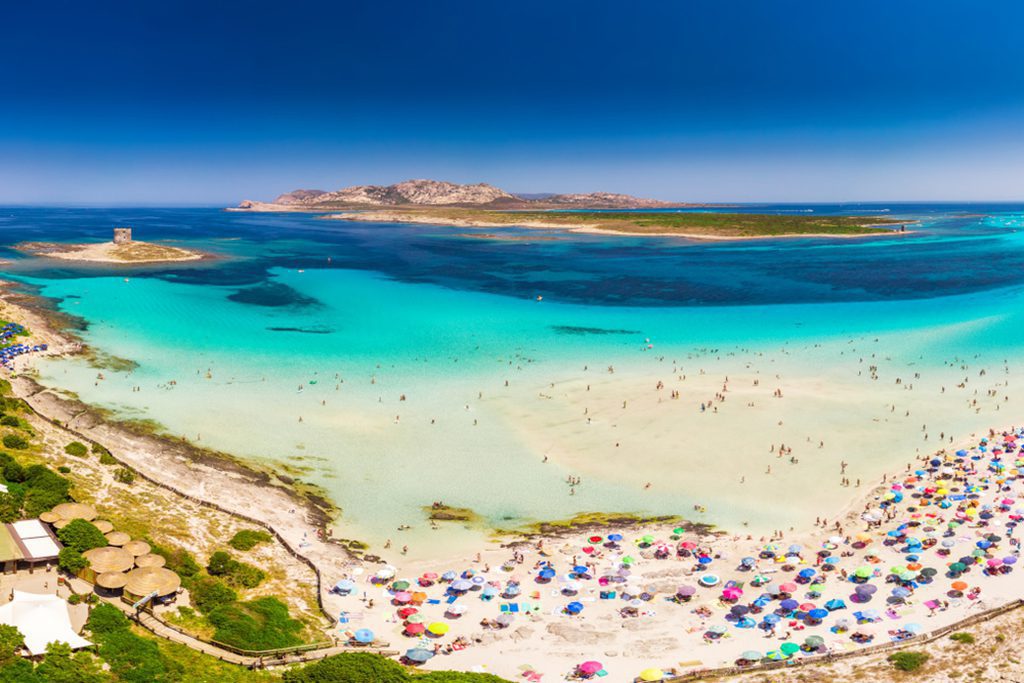
Located in the middle of the Tyrrhenian Sea, off the mainland’s western shore, lies the island of Sardinia. There are several beautiful beaches on the island of Sardinia, but none compare to the fame and charm of La Pelosa. The beach’s beauty stems from the fact that the sand is soft and the water is shallow, allowing visitors to glimpse the bottom of the ocean floor. There is a little of the tropics in Italy, and La Pelosa is sometimes likened to the Caribbean. At or close to La Pelosa, you can go surfing, kayaking, and even scuba diving.
22. Basilica of San Vitale in Ravenna

Once the Western Roman Empire’s capital, Ravenna in northern Italy is now most famous for the Basilica of San Vitale. Hundreds of mosaics can be seen within the basilica, which was built in the sixth century. In certain rooms, every accessible surface is covered in mosaics depicting biblical scenes. These mosaics in Ravenna, Italy, are a popular destination for tourists interested in religion, architecture, and the arts because of their striking patterns and vibrant colors.
21. Dolomites
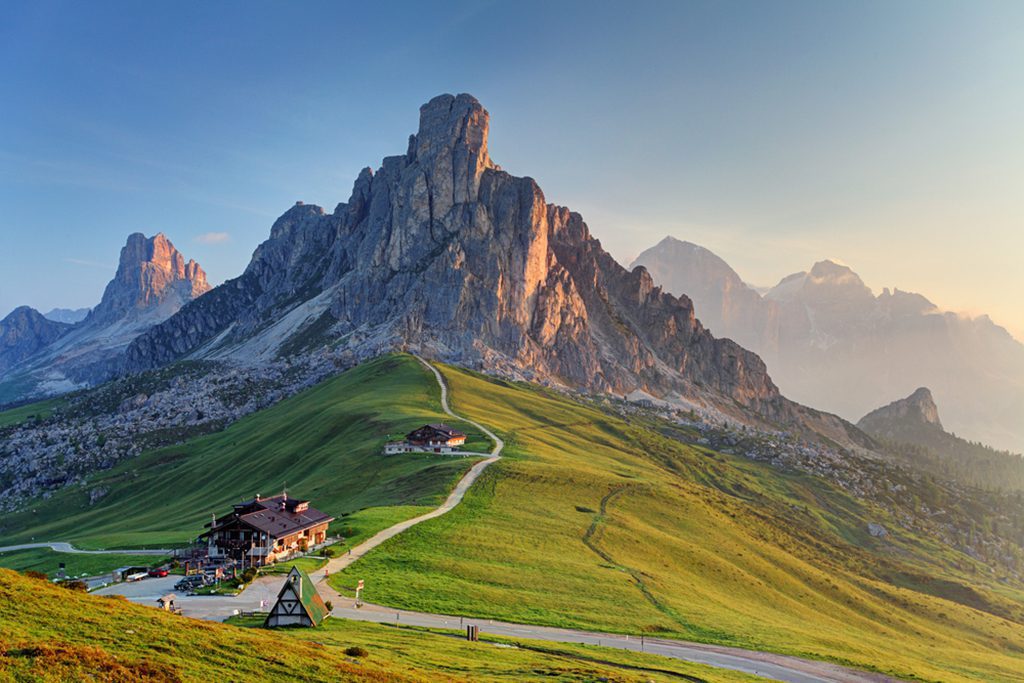
Northern Italy is home to a mountain range known as the Dolomites, and it is a popular destination for winter activities like skiing and snowboarding. The stunning natural beauty of the Dolomites is a draw year-round. The peaks might take on a surreal pink or purple color at sunset. Trento, a little town in the Dolomites with a magnificent castle, is a popular destination for tourists who come to the area to either go hiking or shop.
20. Basilica di San Francesco in Assisi
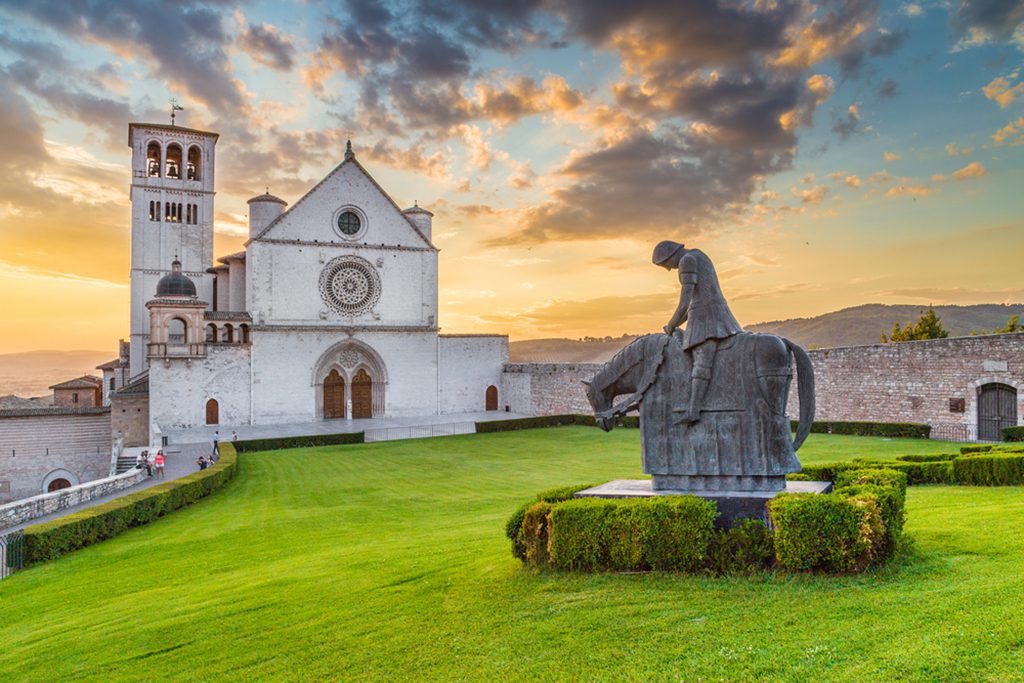
For many Italians, their religious pilgrimage ends at the Basilica di San Francesco, often known as the Basilica of Saint Francis. The basilica of Saint Francis was built in Assisi in the 13th century. Despite Saint Francis’s reputation for humility and frugality, the lavish basilica belies his actual lifestyle. This two-story Romanesque building has a crypt, elaborate windows, and thousands of works of art.
19. Sassi di Matera

Cave homes in Matera are known as the Sassi di Matera. To many, these houses represent the very oldest sign of human habitation in all of Italy, and their age might be as high as 9,000 years. Many of the residences, shops, and cafés are still located in caves that have been cut out of the rock. Visiting prehistoric human-occupied caverns and then relaxing with a glass of local wine from a cave of the same kind a few steps away is a once-in-a-lifetime experience.
18. Mount Etna
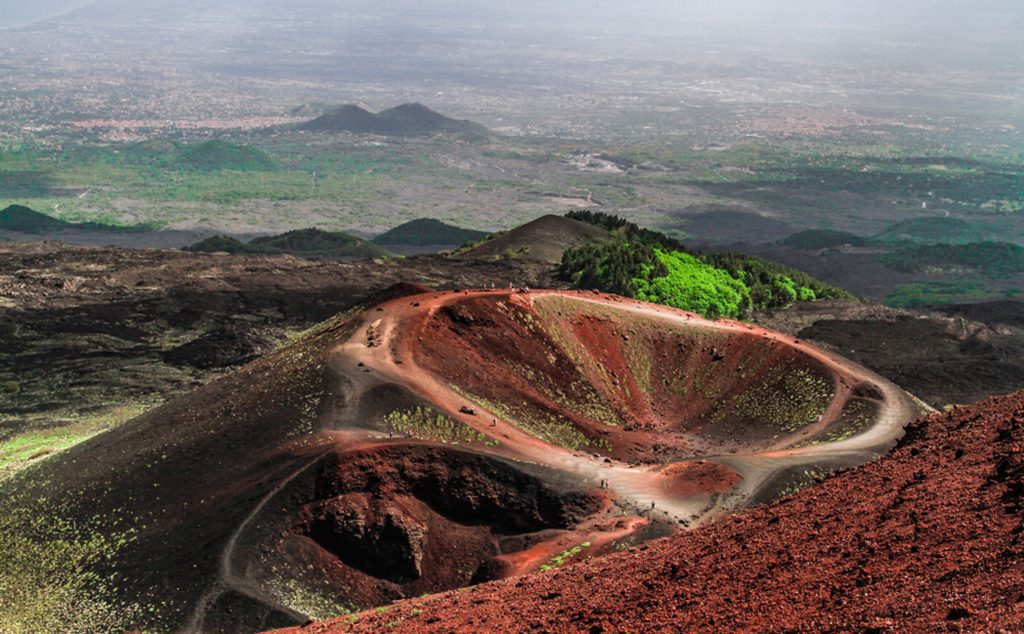
The tallest point in Sicily is Mount Etna. The volcano is regularly erupting and is one of Italy’s highest peaks. In Italy, there is a national park named Parco dell’Etna that encompasses the area around Mount Etna. Walking through the craters and cracks of Mount Etna is possible, and visitors can sometimes get near enough to witness the lava or steam. In addition to stunning scenery, travelers to Mount Etna will also have access to a wide variety of excellent wines grown in the region’s famously fertile volcanic soil.
17. Duomo of Orvieto
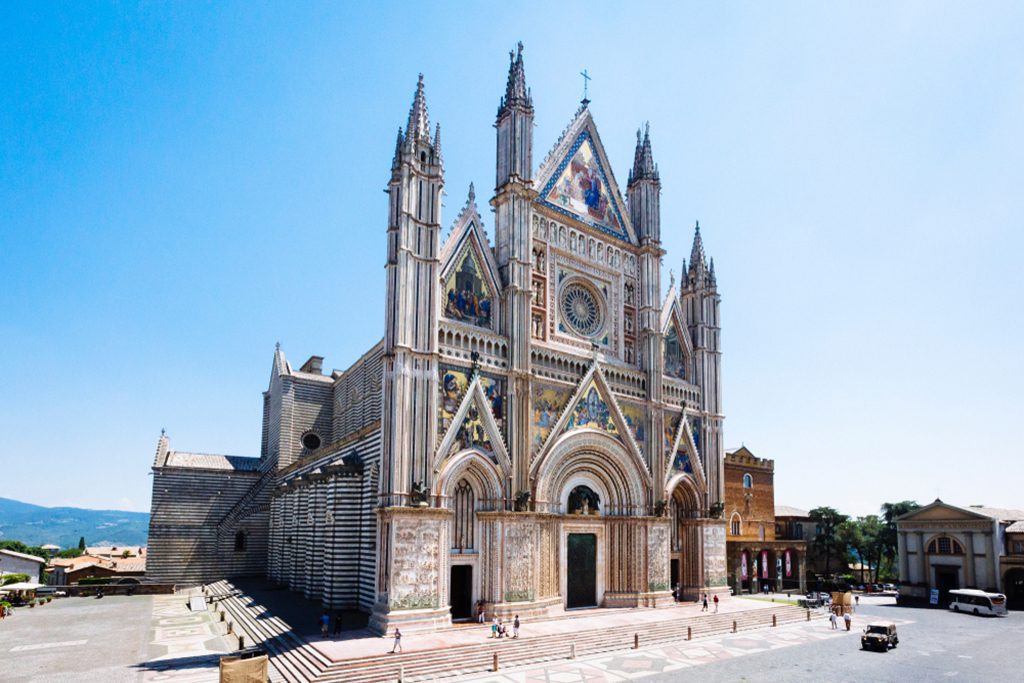
The Duomo of Orvieto is a magnificent cathedral that exemplifies Italian Gothic design. Pope Urban IV began construction of the Roman Catholic cathedral in the 14th century, but it took over three centuries to finish. Nowadays, those who come to see it are awed by its seven stories, intricate facade, and horizontal marble stripes. Luca Signorelli is responsible for the majority of the artwork found in the Duomo of Orvieto, which portrays end-of-the-world scenarios and stories from the Book of Revelation.
16. Pizza Napoletana

You can get great pizza all around Italy, but the best of the best is in Naples. In this city, pizza was created, and it continues to reign supreme. Neapolitan pizza, in contrast to pizza in the United States, is often extremely thin-crusted and saucy and is meant to be consumed in one sitting. Though many Naples pizzerias produce tasty pies, the “Vera Pizza Napoletana” badge is only awarded to those who strictly adhere to the guidelines set out by the Naples Pizza Association.
15. Portofino
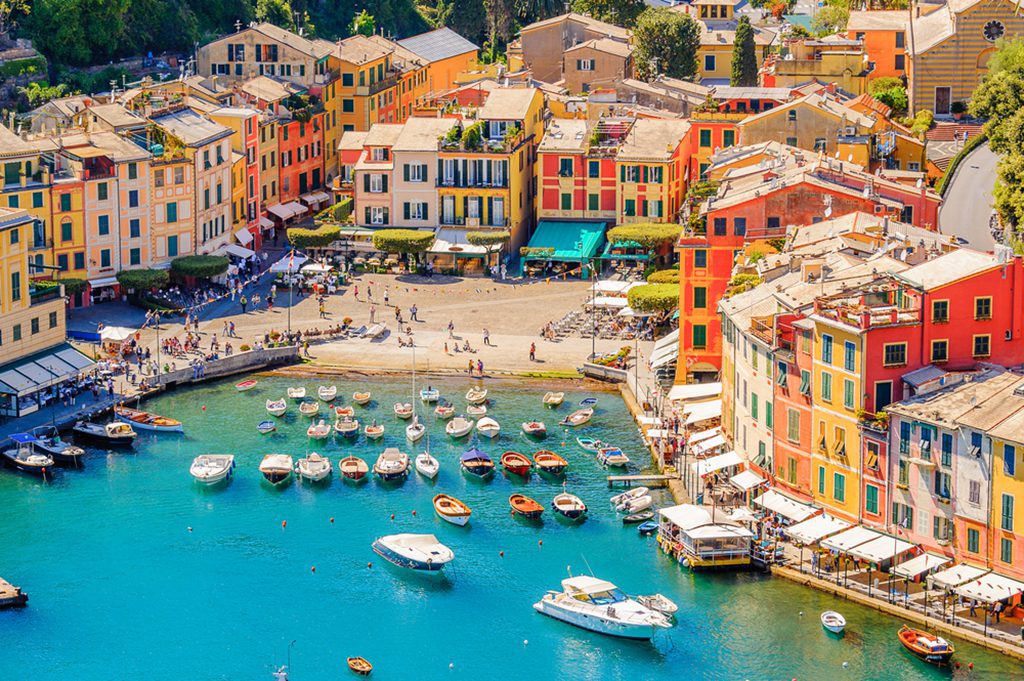
Portofino is one of the most picturesque towns on the Italian Riviera due to its picturesque port, green environment, and chaotic rows of hilltop and waterfront homes. The little fishing village has been a favorite day-trip destination for Genoa residents and visitors for decades due to its convenient location only a short distance south of the city. Castello Brown, a fort built in the 16th century, and the Church of St. Martin, built in the 11th century, are two of the most famous monuments in Portofino, but the laid-back atmosphere is what draws most visitors. Tourists flock to the region to take in the stunning scenery of the Ligurian coast, purchase unique pieces of glass jewelry, and indulge in authentic Italian cuisine matched with crisp Pinot Grigios.
14. St. Mark’s Basilica in Venice
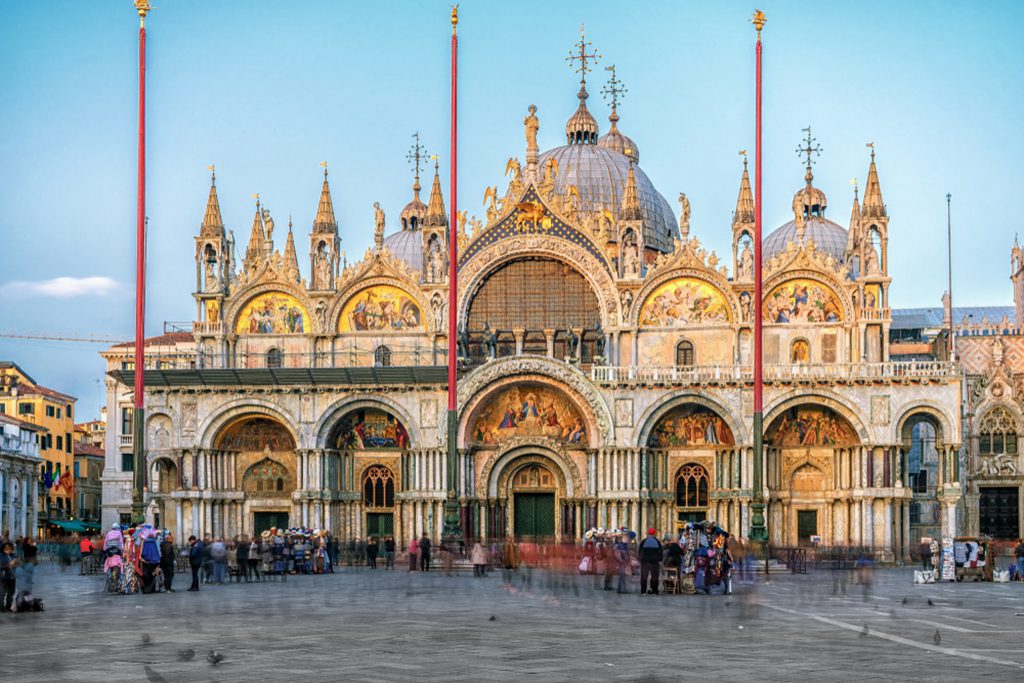
In Venice, the Basilica di San Marco, or St. Mark’s Basilica, is the most famous landmark in the Piazza San Marco. Finished in the 11th century, the massive church is adorned with many gold-leaf Byzantine mosaics and over 500 columns. The ancient bronze horses of Saint Mark, who stand guard at the basilica’s doors, are very notable. Both the Treasury and the Museo Marciano have jaw-dropping collections of antiquity’s finest presents, including jewels, sculptures, and tapestries.
13. Capri
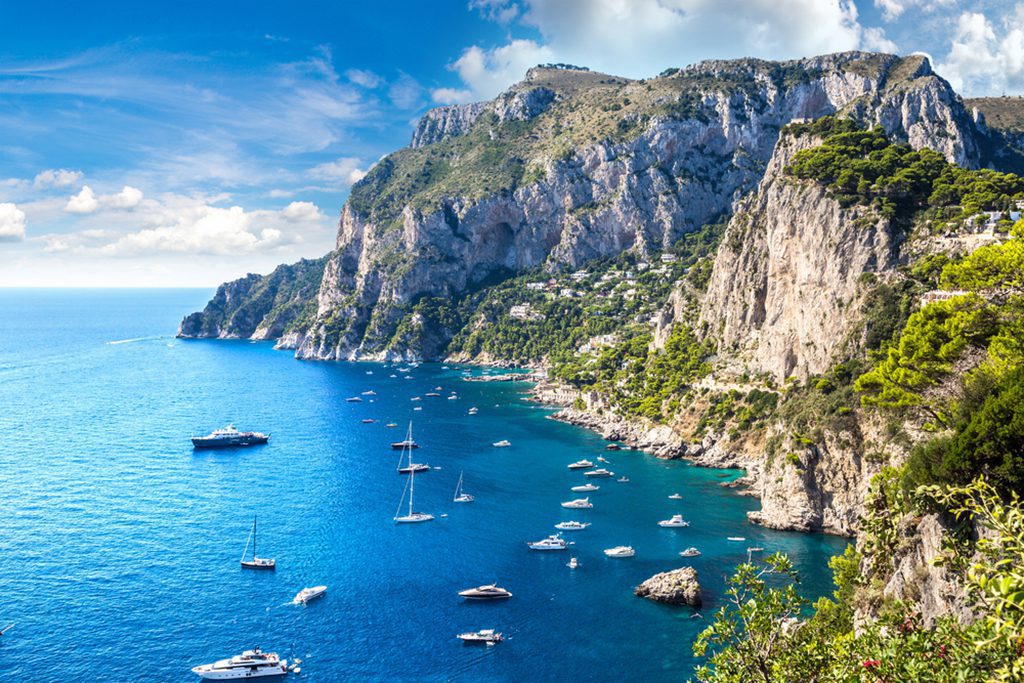
Capri is just three miles from Naples, yet it seems like a whole other world because of its distinct culture and environment. The Blue Grotto is a popular destination for those who arrive by boat, since its stunning grotto has been admired ever since Roman times. Capri is known for its stunning beaches and scenic walks, but the island is also home to some remarkable historical buildings. The Imperial Residence of Tiberius, Villa Jovis, and the Baroque Church of San Michele Arcangelo are not to be missed.
12. St. Peter’s Basilica in Rome

St. Peter’s Basilica is the most visited site in the Vatican Museums and the Vatican City. The spectacular dome above the magnificent basilica was painted by Michelangelo himself. St. Peter’s Basilica, which has been in use since the early 16th century, has grown into a massive basilica with enough room inside for a space shuttle and its booster rockets. St. Peter’s Basilica is worth seeing for more than just its appearance and closeness to the Pope; the artwork within is really remarkable. You will find works by famous artists such as Bernini and Michelangelo.
11. Valley of the Temples
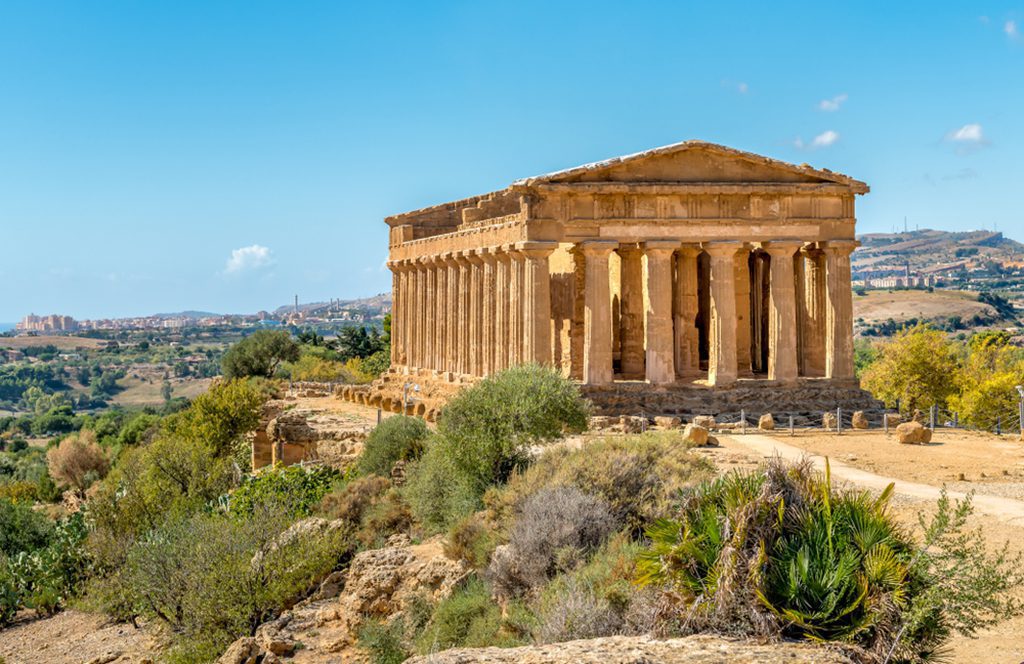
The Valley of the Temples, or Valle dei Templi, is an archaeological site in Sicily. Greek temples built in the Doric style and dating back more than 2,400 years can be seen at this location. The Temple of Concordia, which was renovated in the 18th century and is currently the best preserved of the temples, is the most visited part of the site, but it is well worth seeing the whole thing.
10. San Gimignano
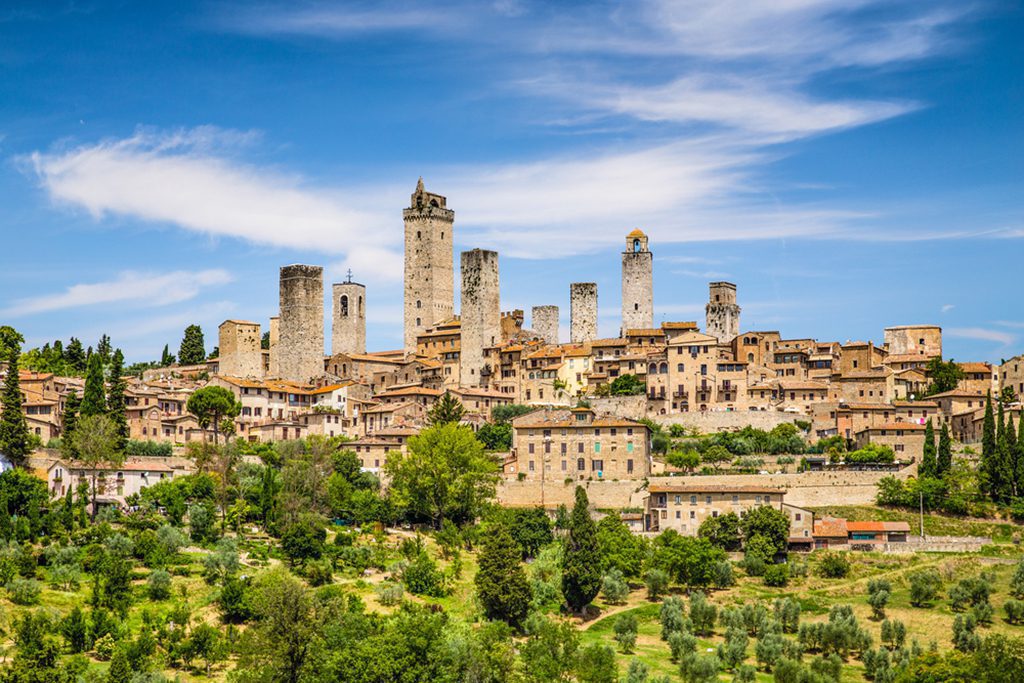
San Gimignano, a village in Tuscany, is sometimes referred to as “the medieval Manhattan” due to the prominence of its 14 impressive stone towers. More than 70 towers were constructed during the height of San Gimignano’s riches and power. Many of San Gimignano’s medieval towers were able to survive when the city’s status faded after the plague devastated it in 1348.
9. Manarola
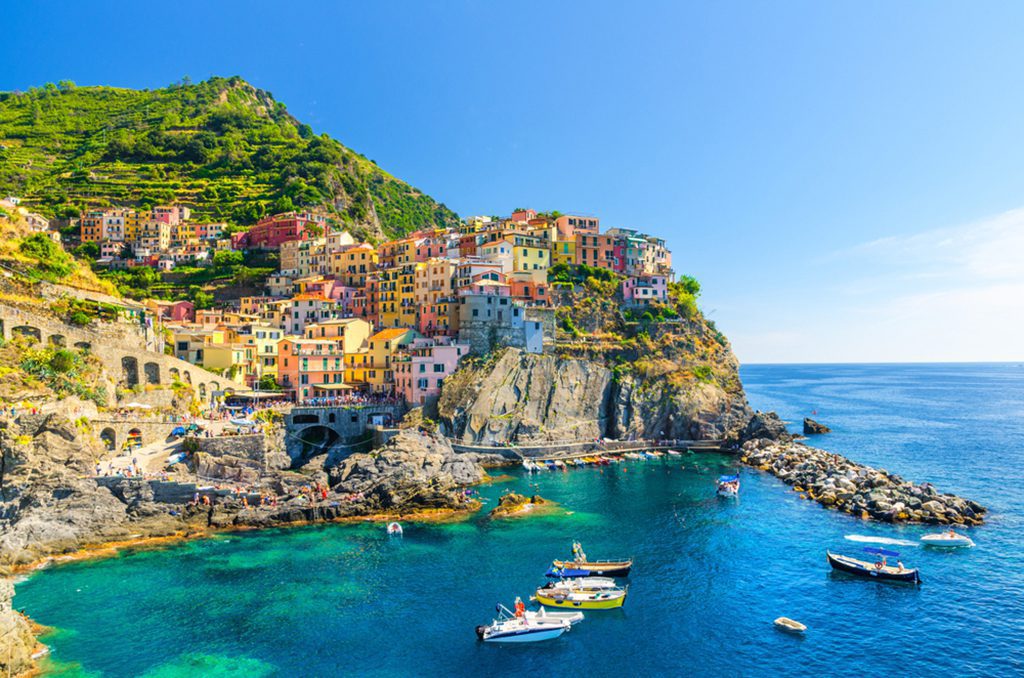
Manarola, one of Cinque Terre’s five historic towns, is nestled along the Italian Riviera. All five of the villages in the “Five Lands” are well-known for their attractiveness. The absence of obvious contemporary construction adds to Cinque Terre’s allure. The communities are linked via footpaths, railroads, and boats; however, cars are unable to enter the area. The towns seem to grow right out of the hillside, and they provide a stunning panorama of the Mediterranean.
8. Leaning Tower of Pisa
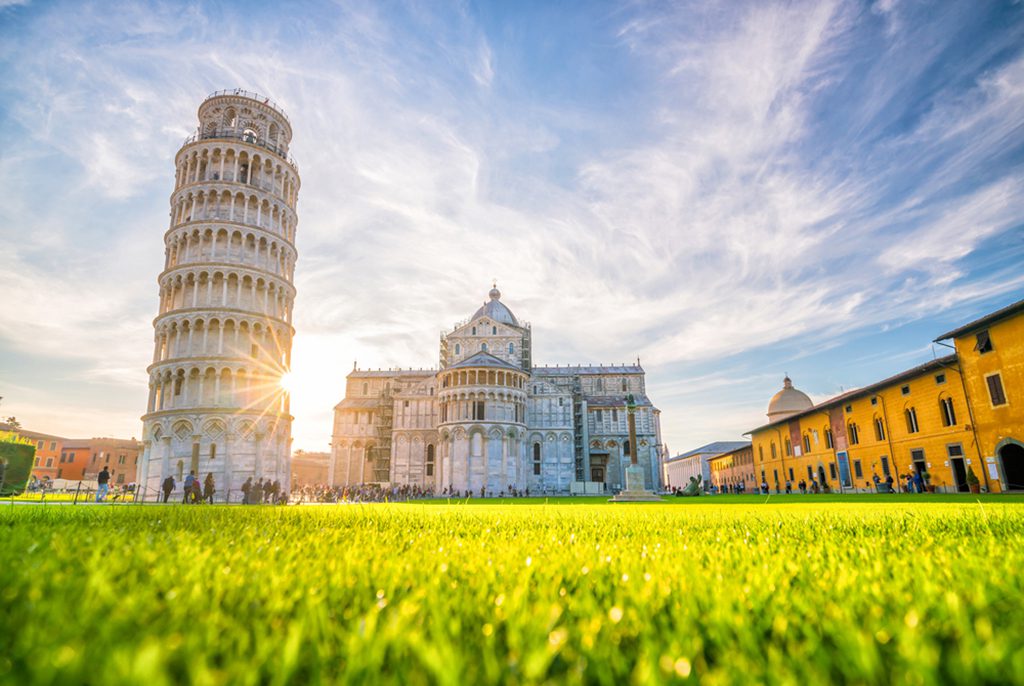
It took roughly 177 years to construct the leaning tower of Pisa, which has become renowned across the globe. Since its foundation was badly placed, the sinking tower was abandoned not long after work began in 1173. Once work restarted, engineers made the tower’s upper stories taller on one side than the other to account for the tilt, and the structure was completed in the second half of the 14th century. The 296 steps of Pisa’s iconic tower have been accessible to the public once again since 2001.
7. Lake Como
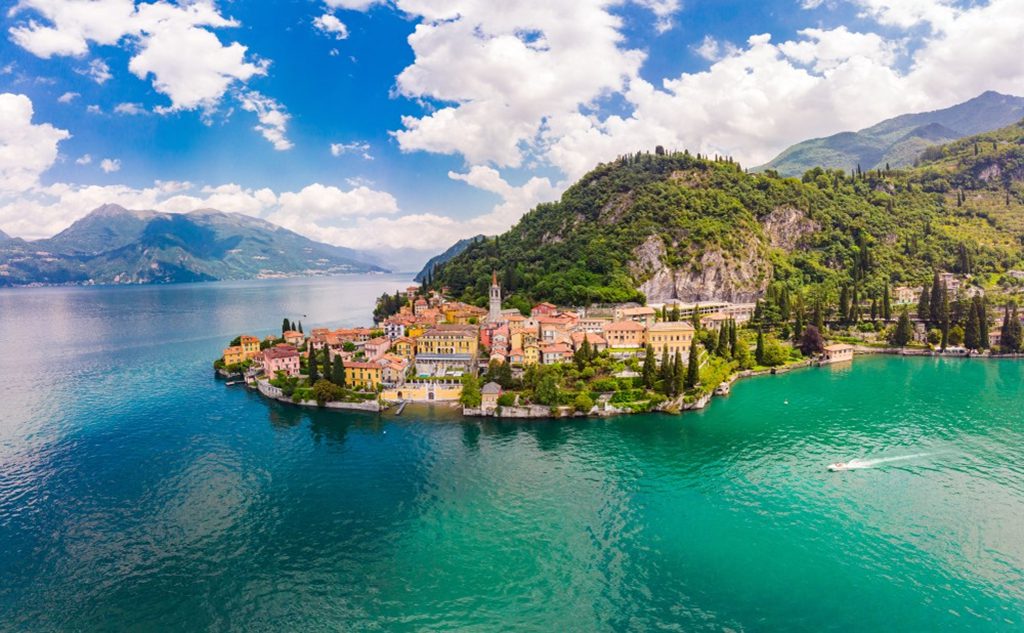
Part of the Italian Lake District, Lake Como has been drawing tourists for over a century because of the region’s idyllic setting and pleasant climate. The lake’s form is reminiscent of an inverted “Y,” with two arms emanating from Como in the south-west and Lecco in the south-east. They meet in the middle, and the lake ultimately extends all the way to Colico in the north. Since Roman times, this lake has been renowned for the beautiful homes that have been constructed around it. Numerous people take advantage of the pleasant weather by cultivating beautiful gardens that host a wide range of plant life.
6. Positano
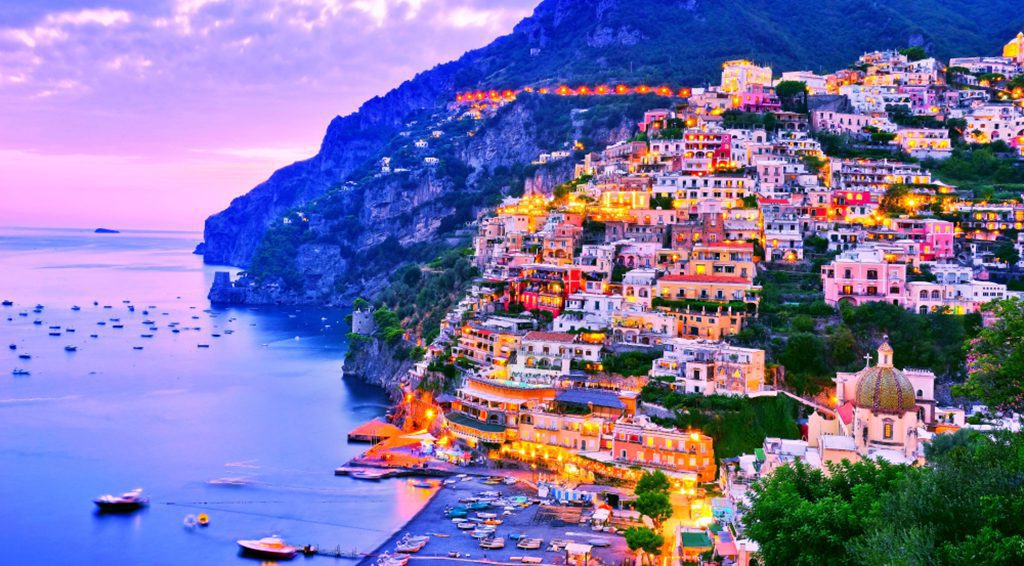
On the Amalfi Coast, a section of coastline famed for its rocky landscape, visual beauty, charming towns, and variety, lies a little town called Positano. The city seems to be dispersed in all directions down a slope that eventually meets the sea. Positano flourished throughout the Middle Ages, but by the middle of the nineteenth century, more than half its population had disappeared. In the 20th century, thanks to the efforts of novelist John Steinbeck, who praised the town’s attractiveness in his writing, it grew from being a poor fishing community to a highly famous tourist destination.
5. Pompeii
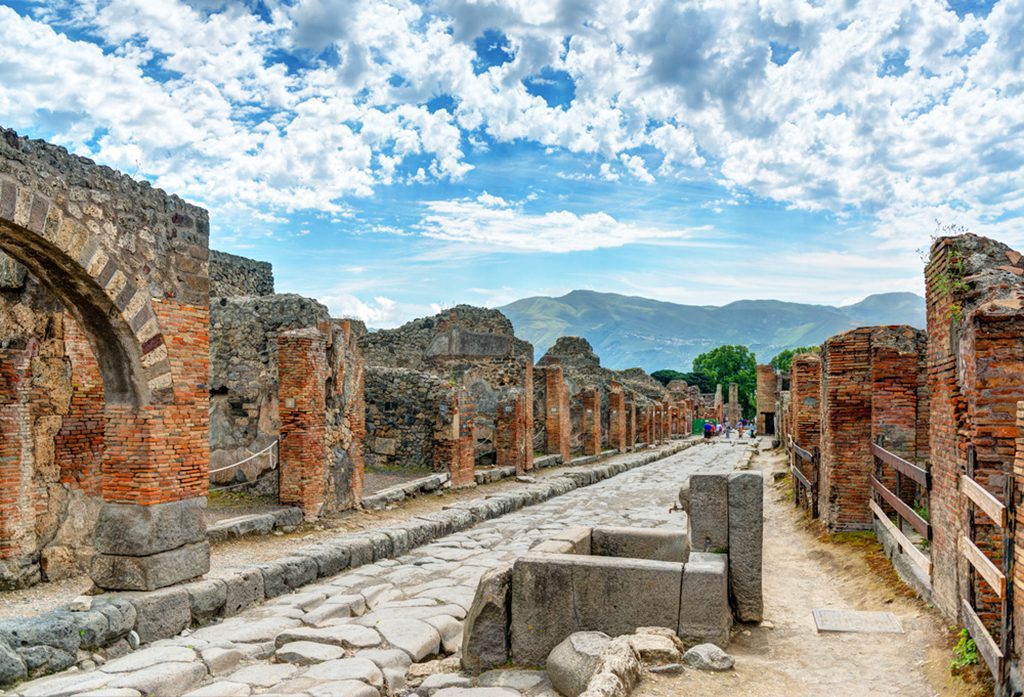
The eruption of Mount Vesuvius on August 24, 79 A.D., buried the nearby town of Pompeii in ash and soil, preserving it in its original condition. Every piece in the room was preserved in ice, from paintings and vases to jars and tables. The excavation of this site has yielded very specific information on the lives of individuals in the first centuries A.D. These days, Pompeii attracts over 2.5 million tourists a year, making it one of Italy’s top tourist destinations.
4. Piazza del Campo in Siena
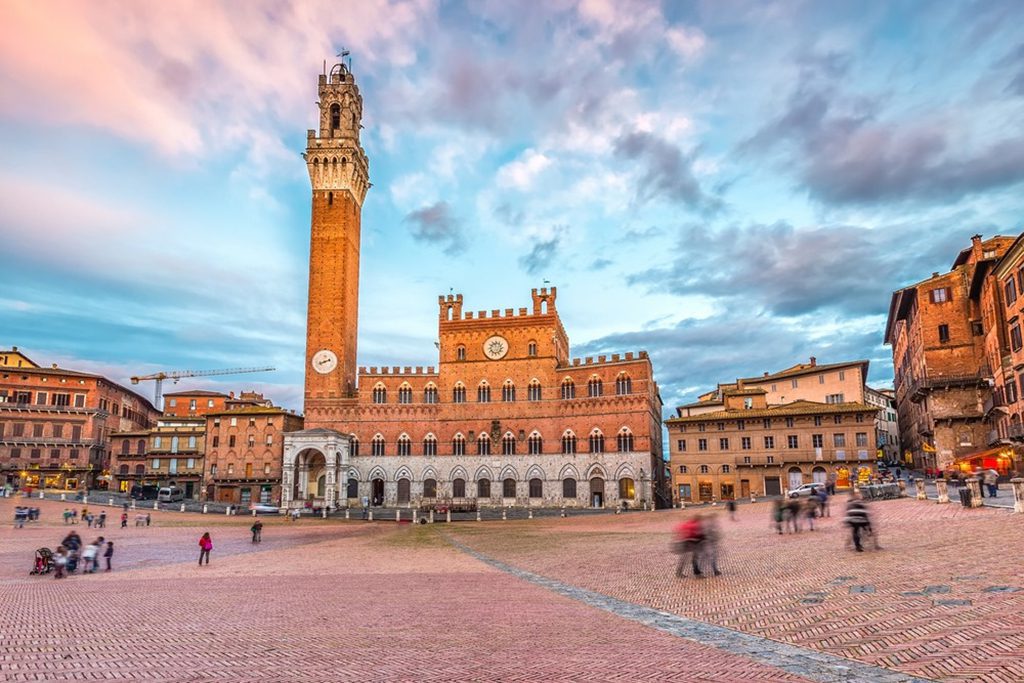
Piazza del Campo, in Siena, Tuscany, is one of the most famous public squares in Europe and a relic of the Middle Ages. Its elegance and structural soundness have earned it international acclaim. The plaza, which is formed like a conch shell, is surrounded by buildings, including the Palazzo Pubblico with its famed tower and other palazzi signorili belonging to the richest families in Siena. The Palio di Siena is a horse race held twice a year and typically lasts no more than 90 seconds. The event includes three laps around the Piazza del Campo, where a thick layer of dirt has been poured.
3. Santa Maria del Fiore in Florence
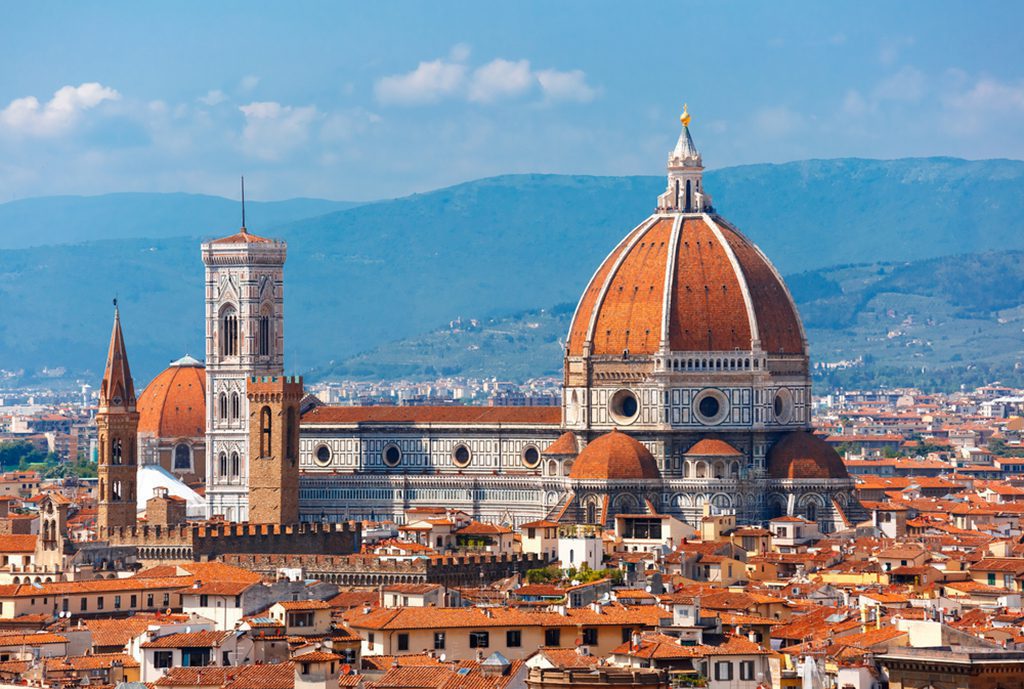
Built in the Gothic style between the years 1296 and 1436, the Basilica di Santa Maria del Fiore is the stunning cathedral that has come to represent Florence. Polychrome marble panels in varying tones of green and pink are framed in white and cover the basilica’s facade. The basilica’s dome was the biggest in the world up to the contemporary period. Until now, no one has built a bigger brick dome than this one.
2. Grand Canal in Venice
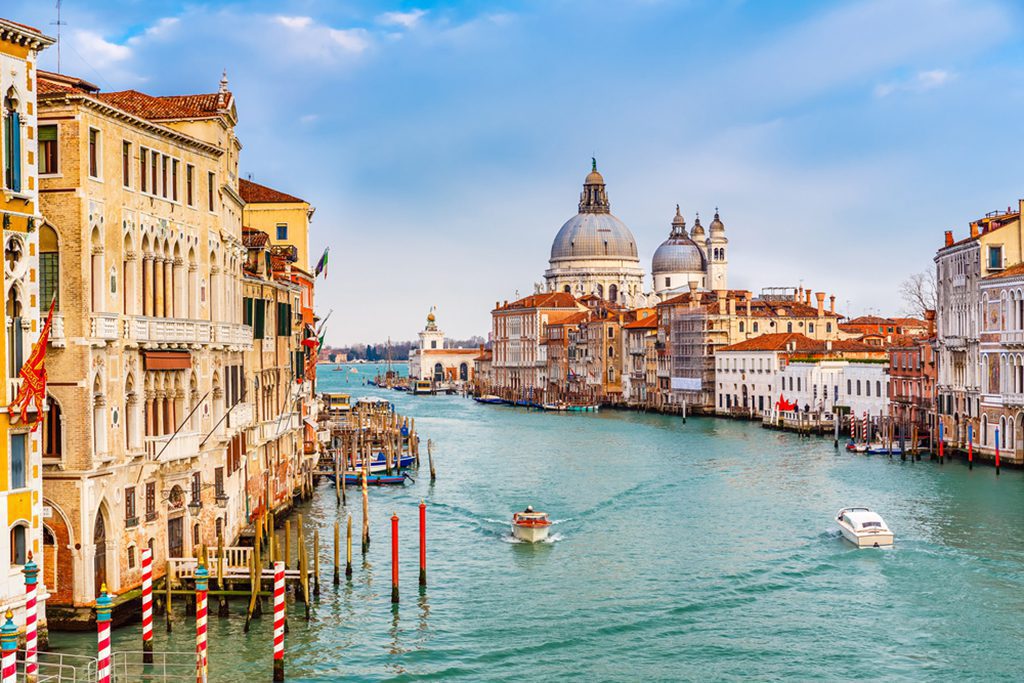
Venice, sometimes simply called “The City of Water,” is often regarded as the best example of a water city. Venice is one of Italy’s top tourist destinations, despite the fact that it has declined since its heyday and now has more visitors than actual residents. The Grand Canal is the city’s main canal, winding its way from the lagoon to the Saint Mark Basin. It is possible to view the Grand Canal when wandering around Venice, but seeing it from the boat is a whole other experience. Although vaporetti, or public water buses, are the norm for locals, many visitors instead choose the more upscale private water taxis or even the more romantic gondola.
1. Colosseum in Rome
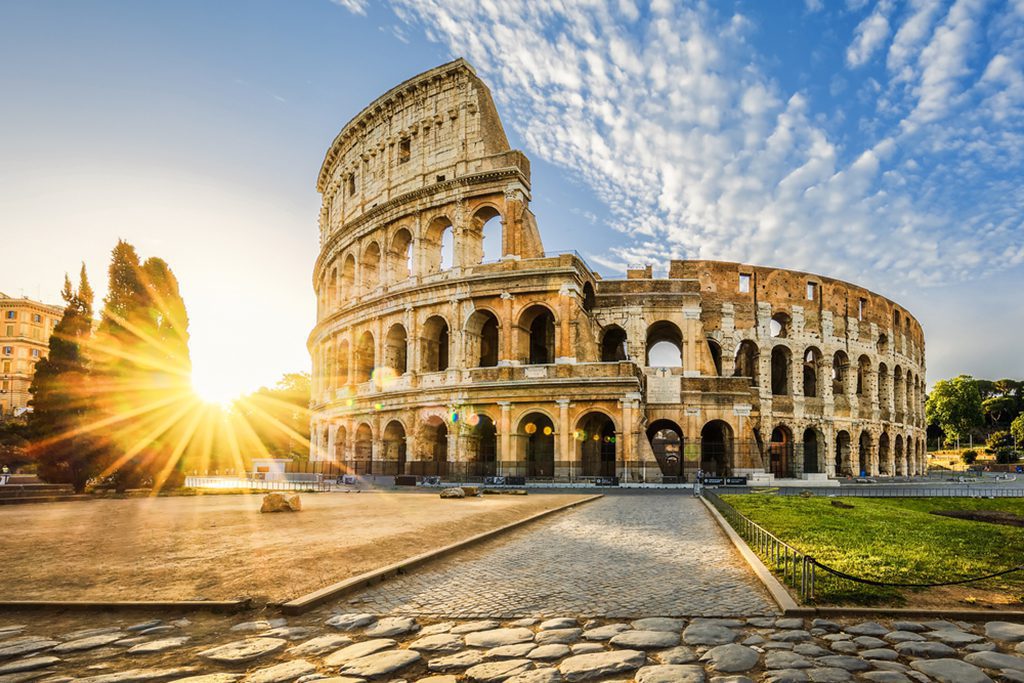
As the biggest and most well-known amphitheater ever built, the Colosseum in Rome deserves its place in history. Emperor Vespasian of the Flavian dynasty began building it in 72 A.D., and his son Titus completed it in 80 A.D. About 50,000 people could fit within the Colosseum, and there were at least 80 entrances for them to use. The “velarium” was a ring of sails that was fastened around the top of the attic, providing protection against the weather.


